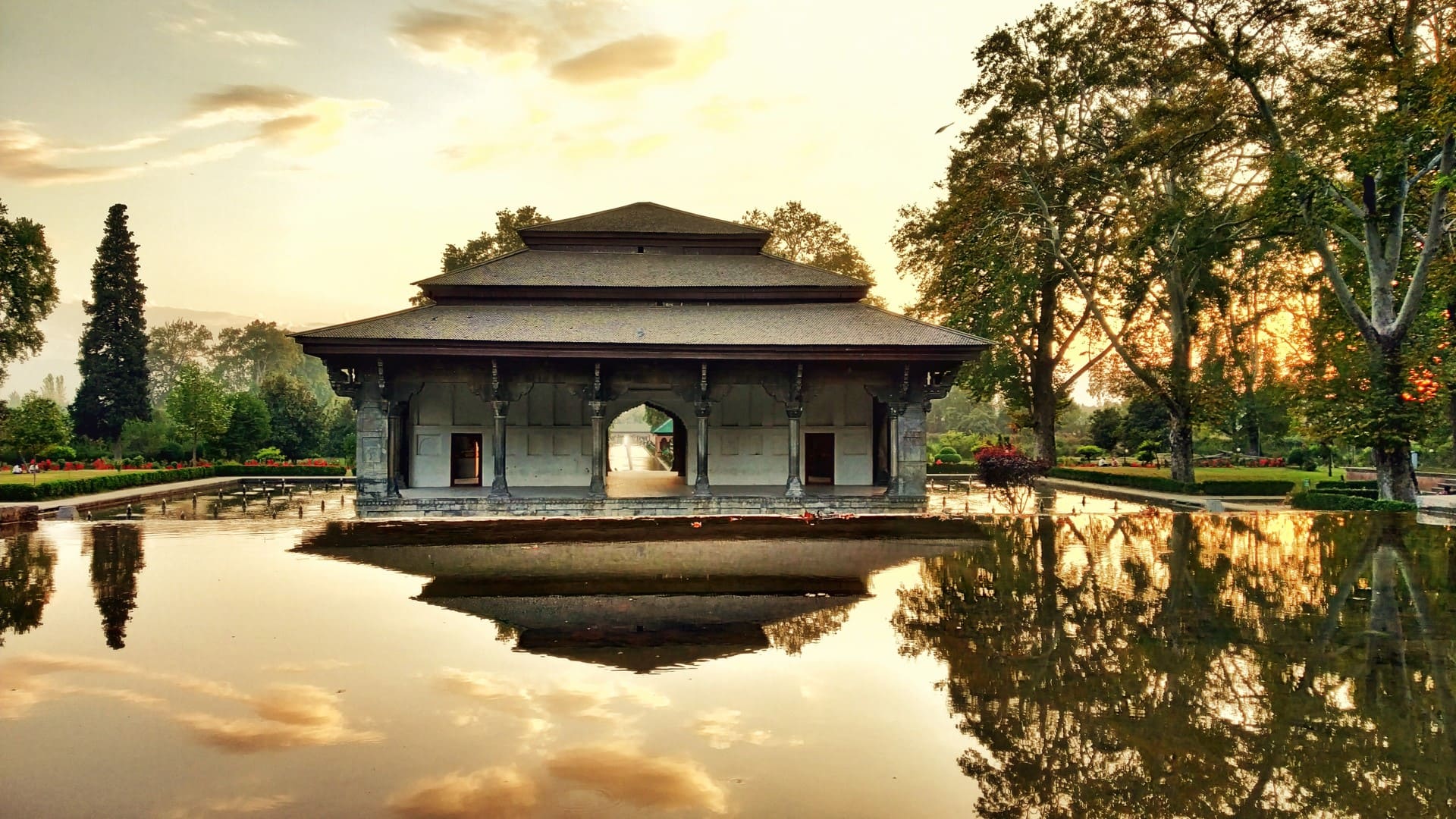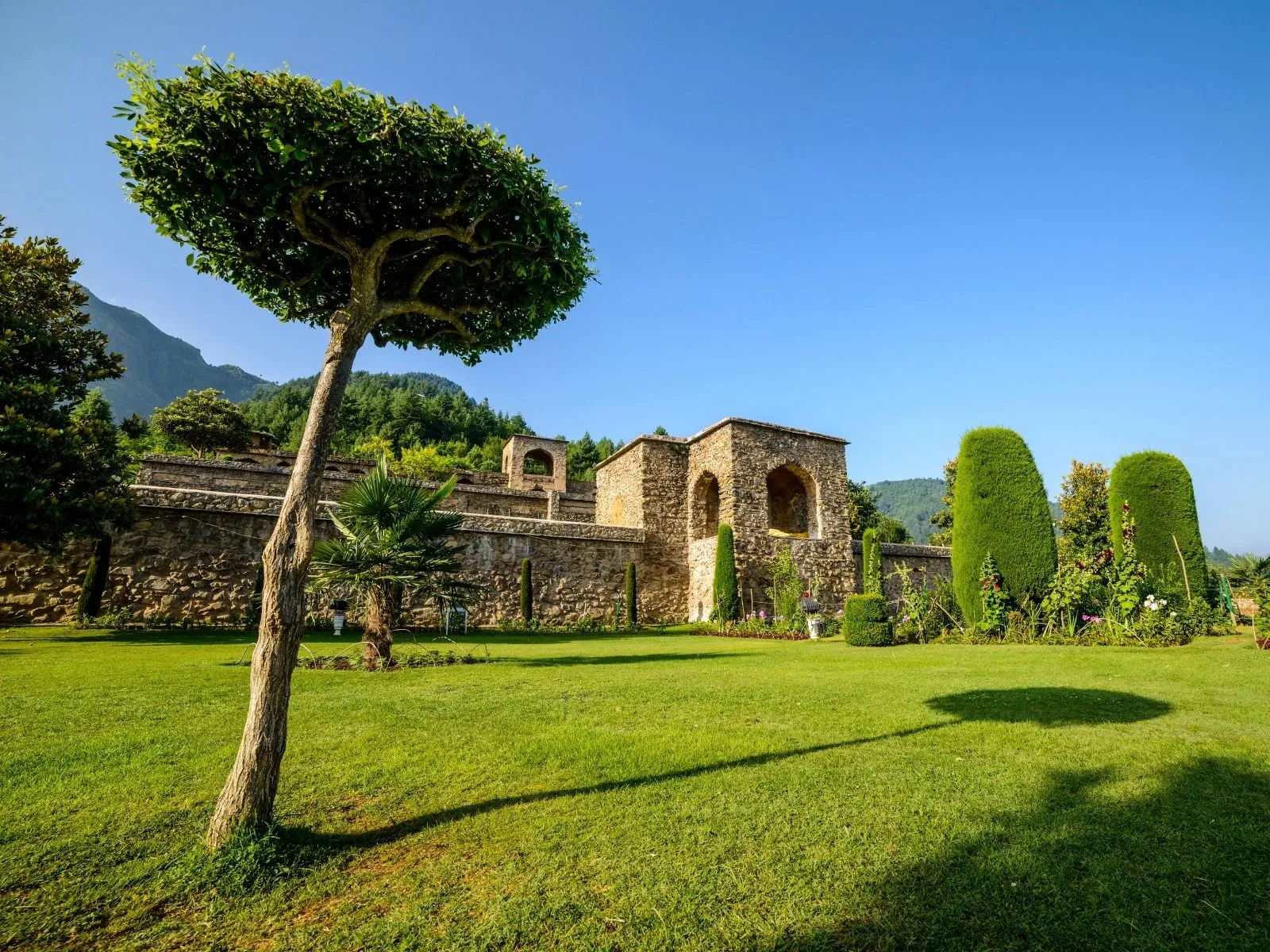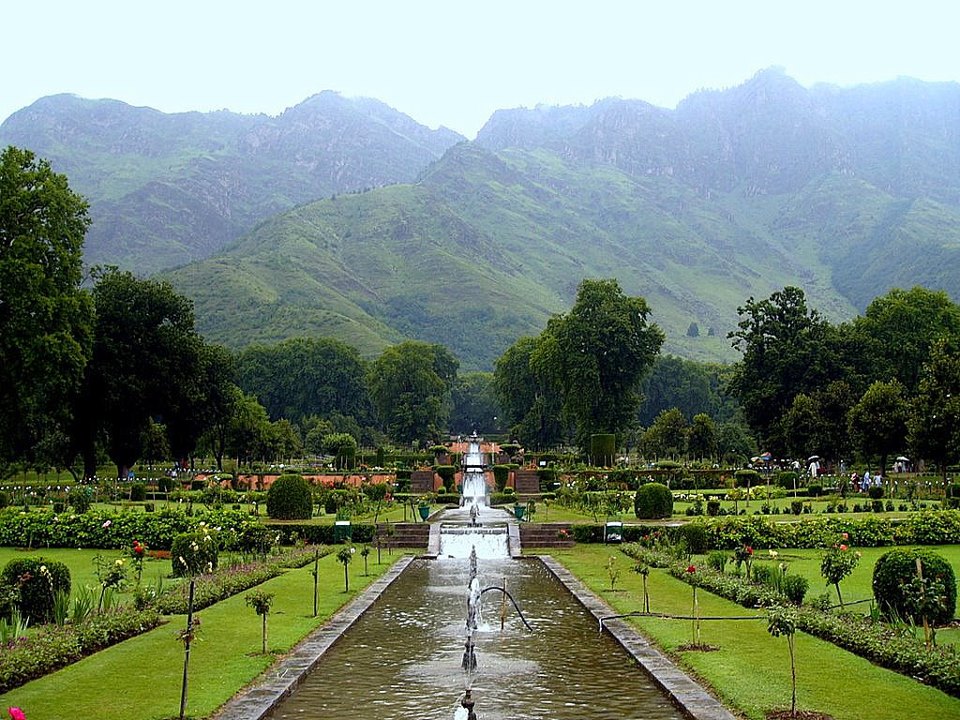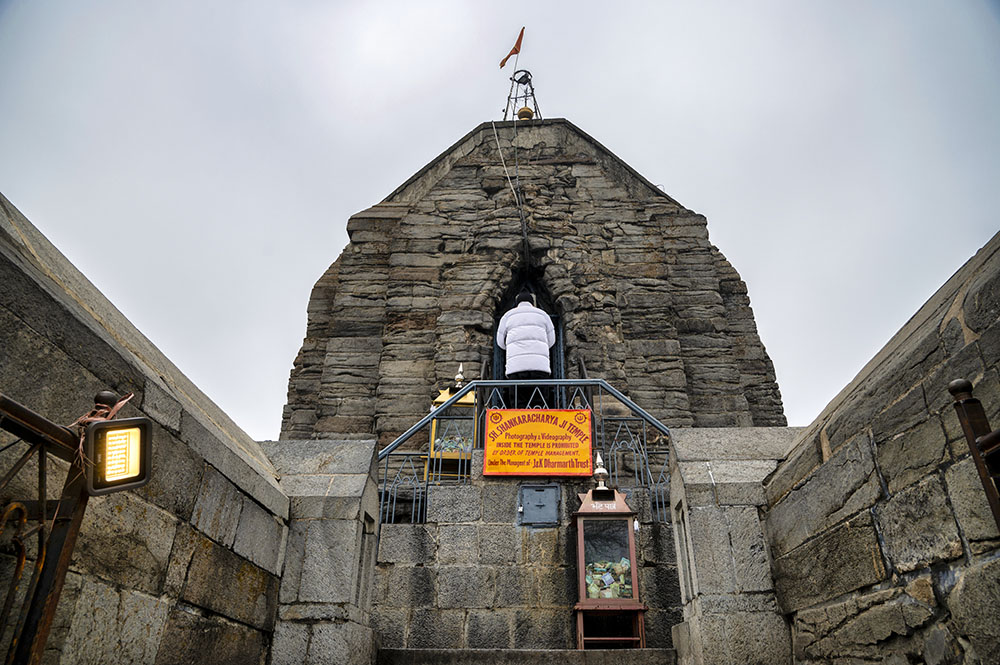Srinagar (Heaven on Earth)
The capital city of Srinagar is located at 1585 meter above the sea level and is in the Union Territory of Jammu Kashmir, on the banks of River Jhelum. The city is famous for its natural environment, beautiful gardens, waterfront and houseboats. . It is also known for traditional handicrafts like pashmina shawl, paper mache, wood carving, carpet weaving and dried fruits.
Srinagar is surrounded by Himalayan Mountains adorned with the Mughal gardens and the tranquil Dal and Nageen Lakes, Srinagar is rightly referred as the Land of Lakes and Gardens. This beautiful place also boasts being one of the dream travel destinations in India for honeymooners and family vacationers.
The beauty of Srinagar is such that it has been called the “Venice of the East” .The landscapes of Srinagar are reminiscent of what one would fancy painting in childhood. It is quite popular for its house-boats. There are lot of other attractions in Srinagar like :
- Shalimar Bagh
- Pari Mahal
- Chashma Shahi Garden
- Dal Lake
- Nagin Lake which is linked to the Dal Lake by a causeway
- Nishat Bagh
- Shankaracharya Mandir
Tourist Attractions:

Shalimar Bagh Mughal Garden
In the present day Shalimar Bagh is attached with another garden Faiz Baksh which was added in the later years during the reign of Jahangir’s son Shah Jahan. The lower portion of the garden, which comprises of three terraces is known as Diwan-i-Aam while the rest two are contained on the upper portion of Shalimar Bagh and was known as Diwan-i-Khas and was used by the emperor and his royal courtiers.

Pari Mahal (The Angles Abode):
Pari Mahal is adorned with seven terraced gardens which has variety of flowering plants, trees and shrubs for visitors to see. In the night the entire mahal gleams with light and its reflection can be seen on Dal Lake. Dara Shikoh is said to have dedicated this garden to his Sufi teacher, Mullah Shah.

Cheshma Shahi Garden
Cheshma Shahi is a terraced garden dotted with walkways, colorful plants and pools of water. It remains open from March to November. Shah Jahan named the garden after a mountain spring that waters it and so it has the name Cheshma Shahi. Tourist visits this attraction in Srinagar to drink water from the spring which is believed to have medicinal value. Even in the peak season the water from the spring ia always cold. The garden has Persian/ Iranian influence in its architecture and well manicured offering a visual treat to the tourist.
Visit Timings: Cheshma Shahi can be visited between 10 am to 6 pm.
Entry Fees: Rs 40 per person.

Nigeen Lake: The Jewel in the Ring
The houseboat accommodation option on Nigeen Lake offers a unique travel experience to cherish for a lifetime. The tourist can also enjoy a Shikara ride amidst serene and sheer nature. The lake is indeed a jewel of Srinagar which adds to the tranquil and picturesque environment.
Highlights of Nigeen Lake:
- Shikara rides
- Houseboat stay
- Amazing views of sunrise and sunset
- Incredible eternal beauty
Visit Timings: The best time to visit is from March to November when the weather remains pleasant during these months.

Dal Lake: Lake of Flowers
Dal lake is lined by gardens built in Mughal era and many parks. The best views of the Dal lake can be seen from the Shalimar Garden and Nishat Garden that were built during the reign of Mughal Empreror, Jehangir. Dal Lake is also famous for its charming houseboats or the shikara houses. The floating accommodations are once in a lifetime experience which is why the Dal Lake is so popular. They are beautifully designed and offer a unique lodging experience. The lake is also an important source for commercial operations in fishing and water plant harvesting.
Char Chinar and Rupa Lank is an island found in the Dal Lake, Srinagar. The amazing lifestyle of people will surprise you, the kids living on Dal Lake ride their own Shikara boats to schools. Fishing is an important source of livelihood for people living on Dal Lake. Tourist can visit this place any time of the year. However, best time to visit is May to November when the climate is pleasant and comfortable for the visitors. During these months, tourist can explore the region at its best during the Shikara rides and houseboats tours.

Nishat Bagh: Garden of Bliss
Nishat Garden or garden of Joy was designed and built by Asif Khan, yeh elder brother of Queen Noor Jahan, in 1933. It is believed that Empreror Shah Jahan on seeing the grandeur and beauty of Nishat garden was so impressed that he expressed his gratitude to Asaf Kahn three times. The layout of the garden was influenced by the Persian architecture but the actual landscaping was done in accordance with the terrain and water patterns unique to Kashmir Valley. It has a beautiful water channel flowing through the middle, which further adds to the romantic charm of the garden.
Highlights of Nishat Garden:
- 12 terraced garden each adorned with beautiful colorful flowers.
- The layout of garden has Persian touch to it.
- The beautiful surroundings adds to its beauty.
- The amazing view of the Dal Lake makes it even better.
Visiting Hours: 9:00 am to 7:00 pm.
Entry fee: Rs 30 per person.

Shankaracharya Mandir : (Pas- Bahar)
Devotees believe that Jesus Christ once visited this temple during his time. The temple stairs leading to the inner shrine mentions this story. Historical references also mention this incident of Jesus Christ visiting this temple and Kashmir. According to some beliefs, this temple was Buddhist worship place. The temple also bears some Persian engravings, making it more popular.
Lord Shiva is the main deity of this temple, represented in the form of Shivalinga in the sanctum sanctorum. The temple is an important pilgrimage place for the Kashmiri Hindus of the region and historically, it is considered the oldest temple in Kashmir. Many Pilgrims visit the Shankarcharya Temple during their visit to the Holy Amarnath Yatra. The great saint Adi Shankaracharya composed his well known spiritual text ‘Saundarya Lahiri’. The devotees celebrate Shivratri with great enthusiamsm in this temple by offering milk, fruits and flowers to Lord Shiva. Celebrating the festival of Shravan Poornima is the main custom of this temple.

Wular Lake: (Mahapadmasar)
Main source of water for Wular Lake is River Jhelum. The lake also has a small island called the Zaina Lank. This island was constructed by King Zainul-Abi-Din. The Wular lake is fed by three mountain streams Madmati, Erin and Bohnar. There is a legend behind this lake, that this place where the lake stands now, was once a great city which was destroyed in an earthquake an dleft behind a rich structure which was filled by rain water and River Jhelum. This lake also plays a significant role because thousands of people in Kashmir Valley depend on Wular Lake for fishing to earn their livelihood.
The water is calm and placid throughout the year but, it is often flooded by melting snow and heavy volumes of water draining in from Pohru stream. The lake also flutters with thousands of birds and water fowls and some of the common birds that can be seen here are Eurasian Sparrow Hawk, Black Eared Kite, Short-toed Eagle, and Himalayan Monal etc. The lake offers plenty of opportunities for boating, fishing and water skiing. Tourist can hire houseboats, doongas to cruise along designated mooring places in this region. The Lake can also be approached from Nal Sarovar bird sanctuary, which is paradise for bird watchers. The rich marine life is an attraction of the Wular Lake and it accounts more than 60% fish yield of Kashmir.
Got a Question?
Our Destination expert will be happy to help you resolve your queries for this Destination.
10:30 AM – 8:00 PM (Mon to Sat)
Email:- manuadventures@gmail.com
Must Know Before You Visit Srinagar, Kashmir
- Check Travel Advisories: Keep yourself updated with any travel advisories or security concerns issued by your government or relevant authorities regarding Kashmir.
- Weather Conditions: Kashmir experiences varying weather conditions throughout the year. It’s crucial to pack appropriate clothing based on the season you’re traveling in. In winter, heavy winter clothing is necessary, while light to moderate clothing suffices for summers. Also, be prepared for sudden changes in weather, especially if you’re visiting higher altitudes.
- Permit Requirements: Certain areas in Kashmir, particularly border regions and some tourist destinations, may require permits for entry. Make sure to inquire about any permit requirements beforehand to avoid any inconvenience.
- Local Culture and Customs: Kashmir has a rich cultural heritage and follows its own customs and traditions. Respect local customs, dress modestly, and be mindful of cultural sensitivities. It’s also a good idea to learn a few basic phrases in the local language, Kashmiri or Urdu, to communicate with locals.
- Security Situation: While Kashmir is a beautiful destination, it has experienced periods of political unrest. Stay informed about the current security situation and any potential risks. It’s advisable to avoid areas with large gatherings or demonstrations and to follow the guidance of local authorities.
- Transportation: Plan your transportation within Kashmir carefully. Whether you’re traveling by road or air, consider factors such as travel time, road conditions, and any necessary reservations, especially during peak tourist seasons.
- Accommodation: Book your accommodation in advance, especially if you’re traveling during the peak tourist season. Kashmir offers a range of options, including hotels, guesthouses, and houseboats on Dal Lake. Choose accommodations that suit your preferences and budget.
- Health and Safety: Take necessary health precautions before traveling to Kashmir, such as vaccinations and carrying essential medications. Stay hydrated, especially at higher altitudes, and be cautious of food and water hygiene practices.
- Nature and Environment: Kashmir is renowned for its natural beauty, including lakes, mountains, and valleys. Respect the environment by practicing responsible tourism, such as disposing of waste properly and avoiding activities that may harm local ecosystems.
- Travel Insurance: Consider purchasing travel insurance that covers medical emergencies, trip cancellations, and other unforeseen circumstances. This can provide peace of mind and financial protection during your trip to Kashmir.